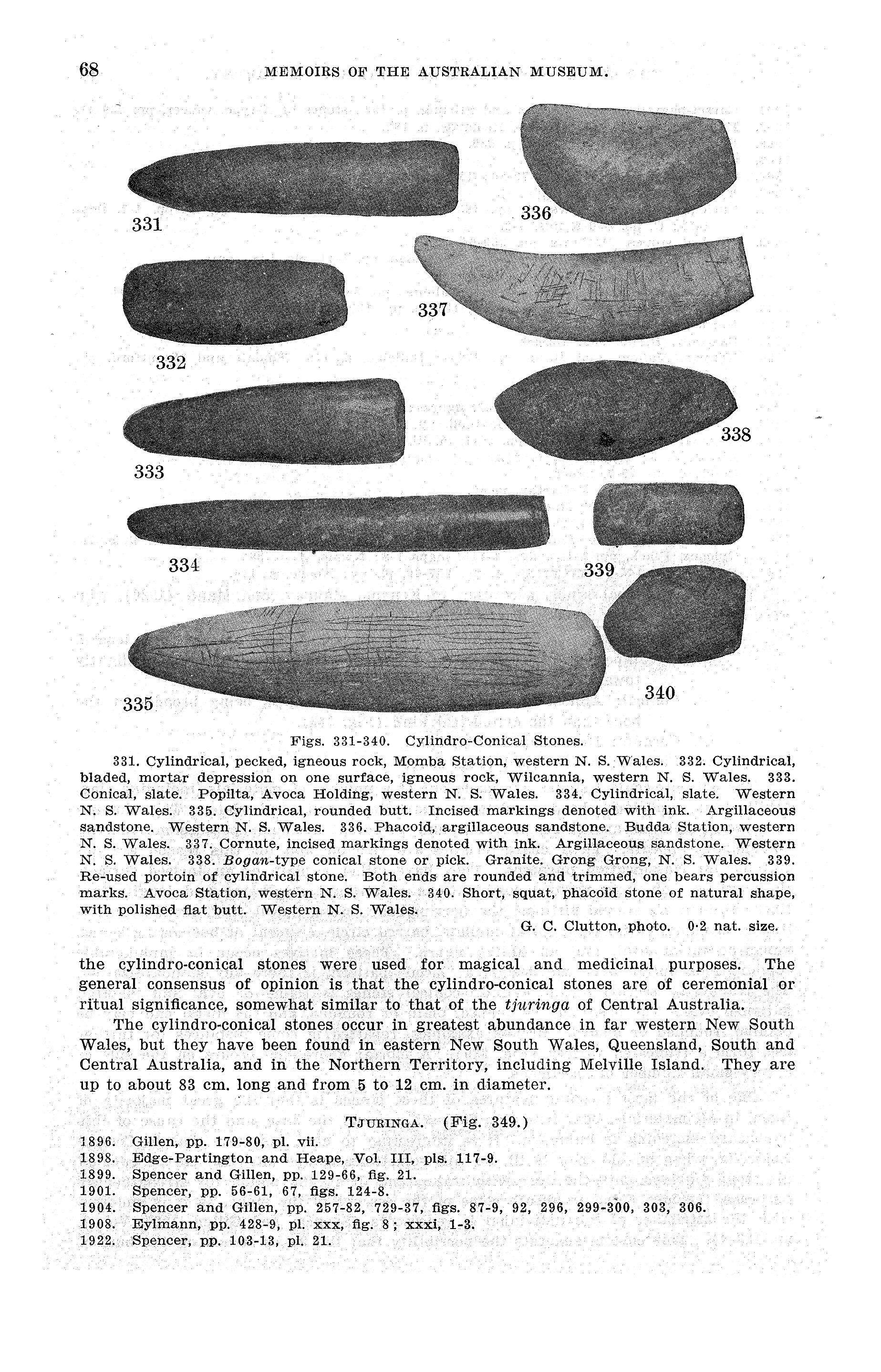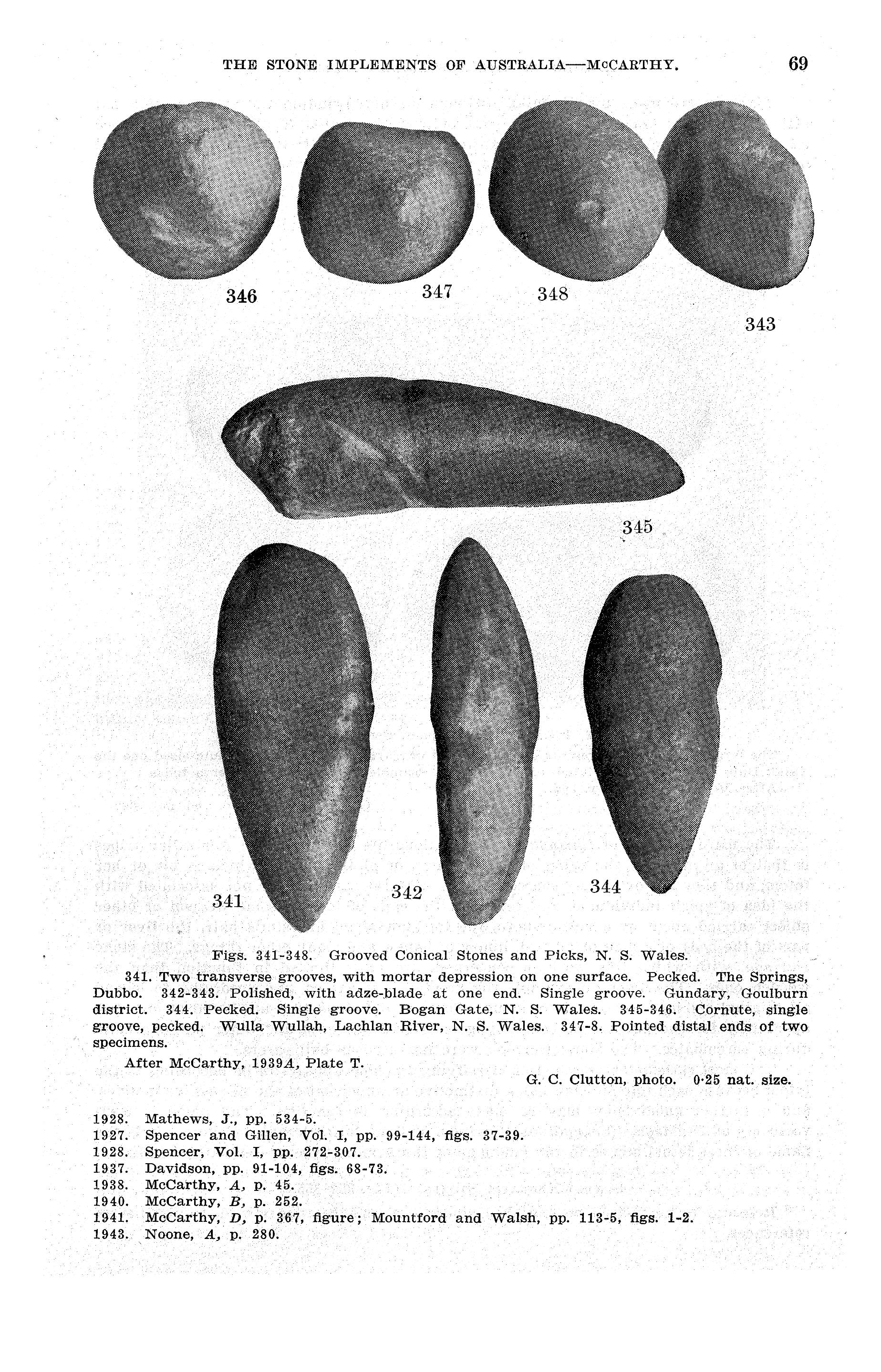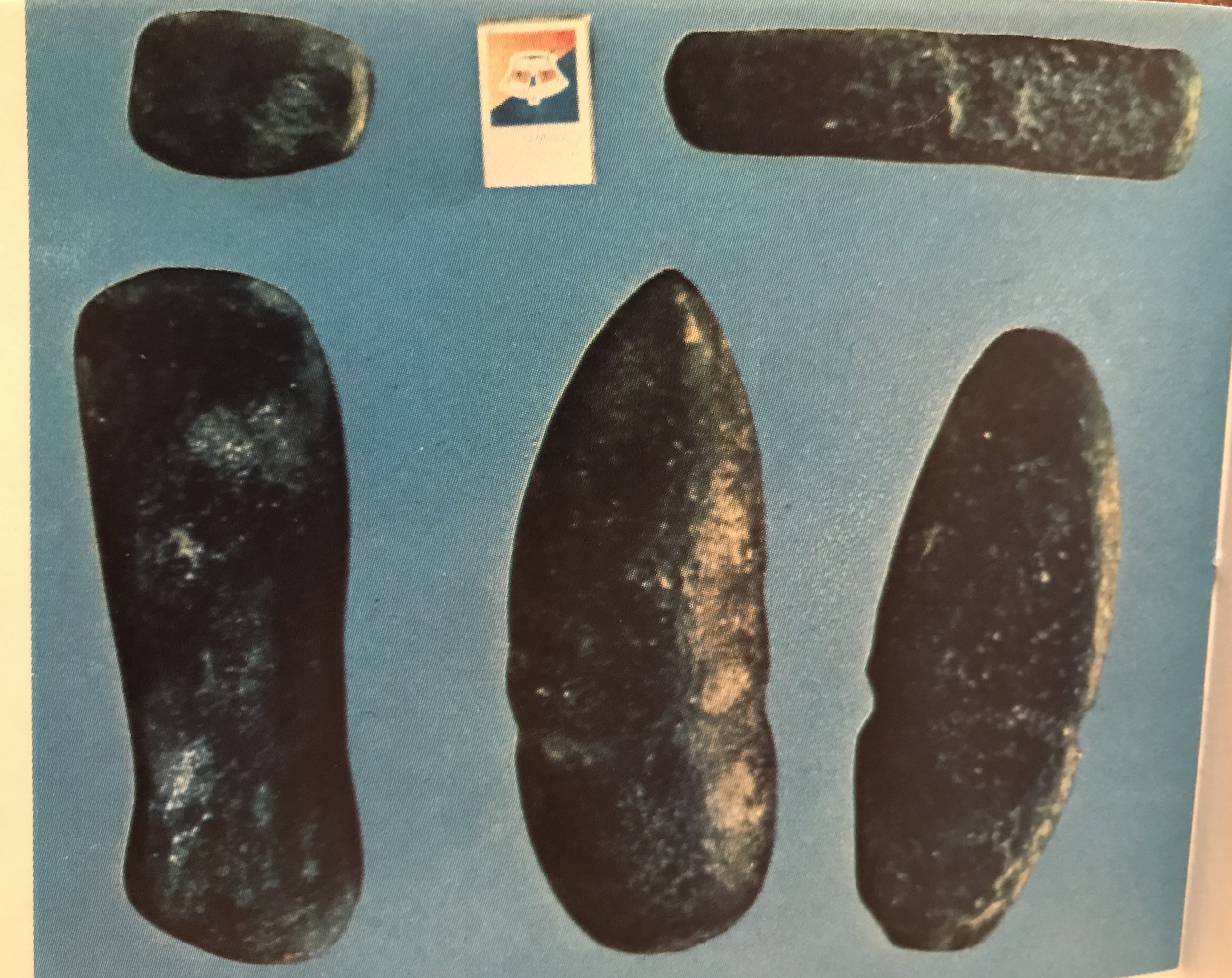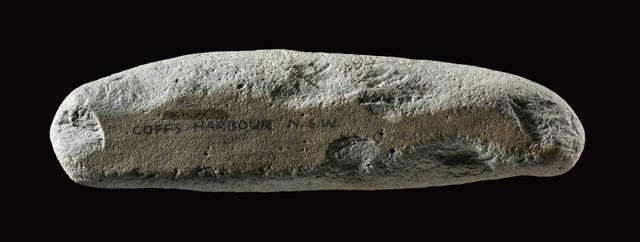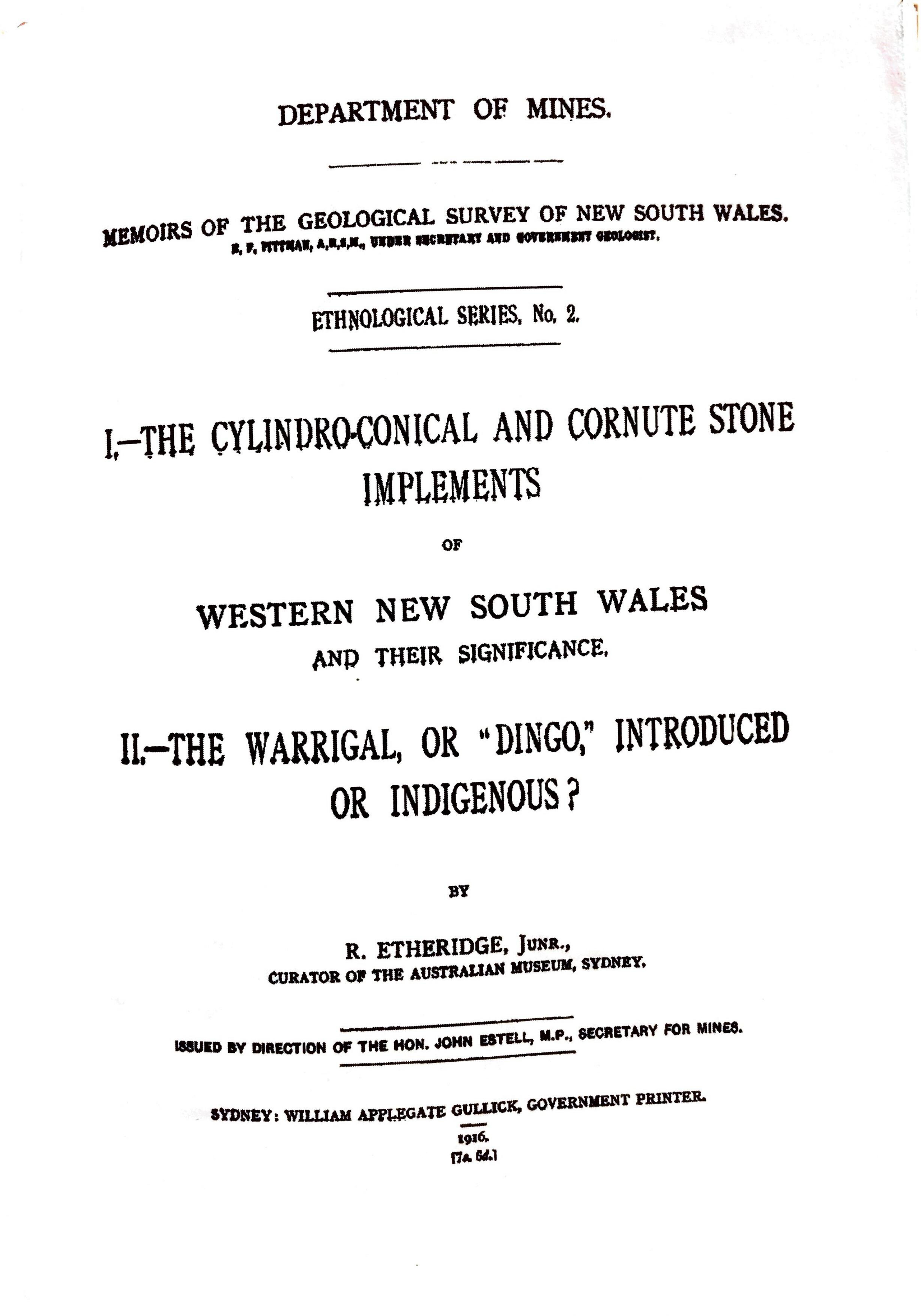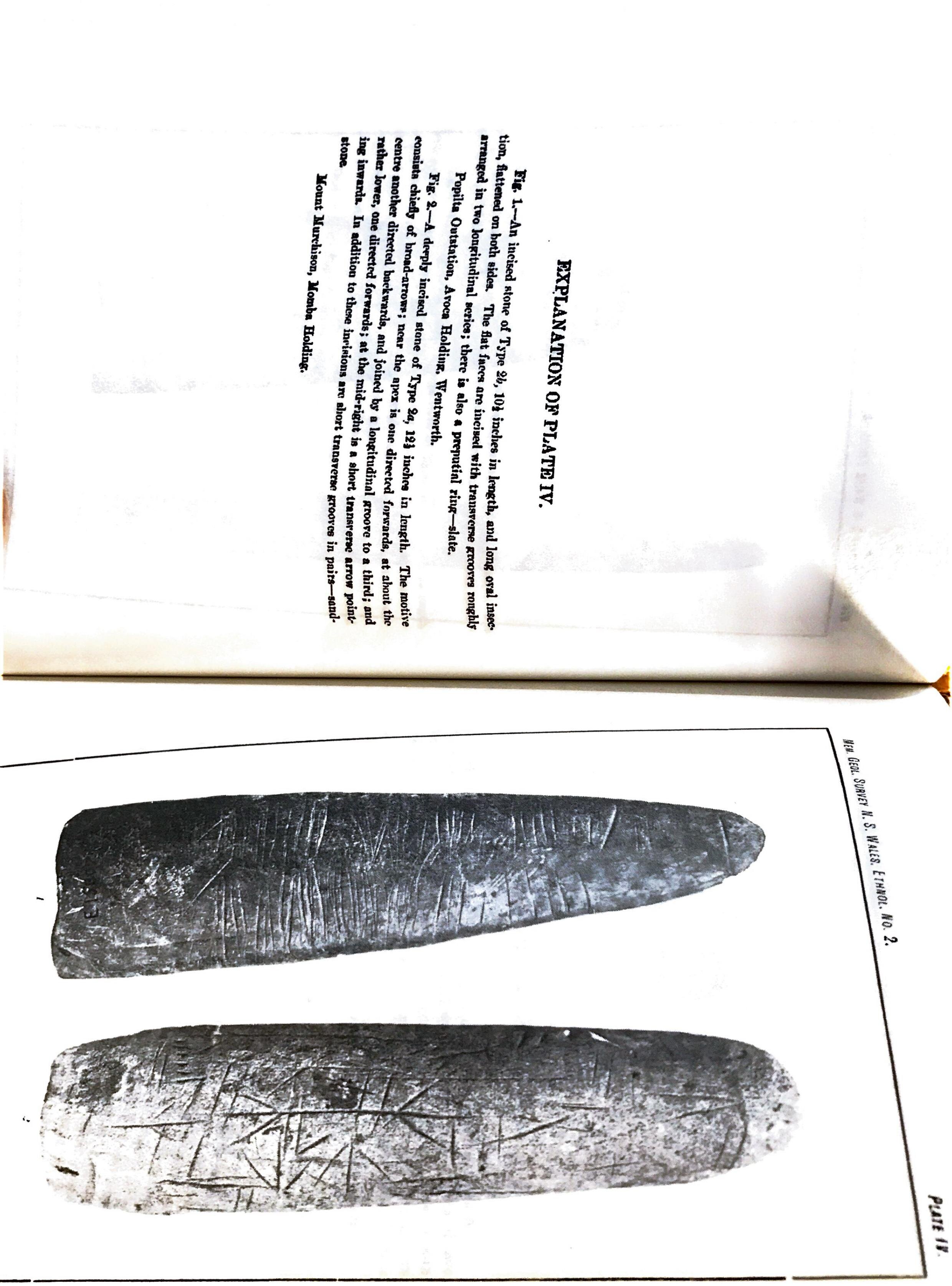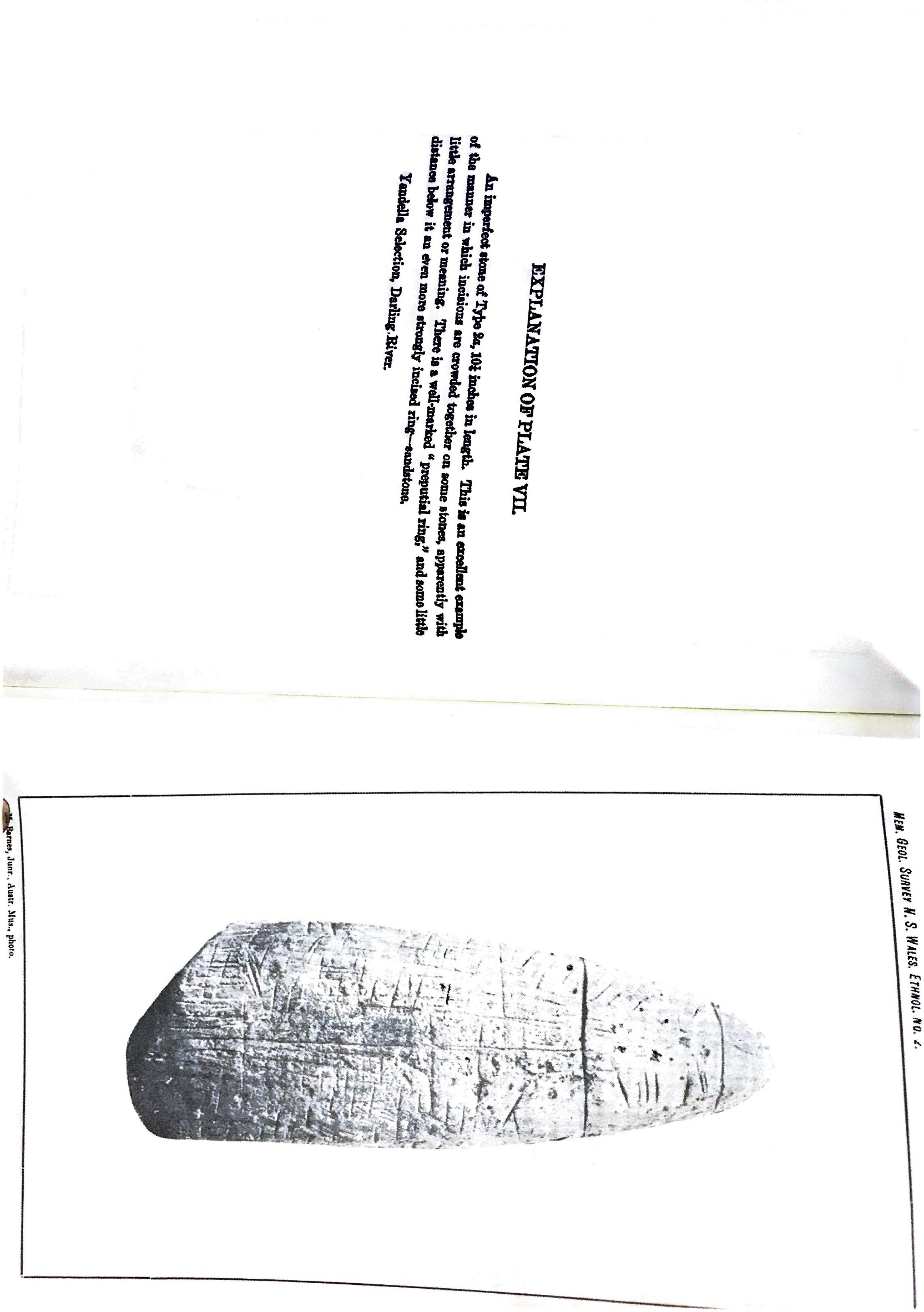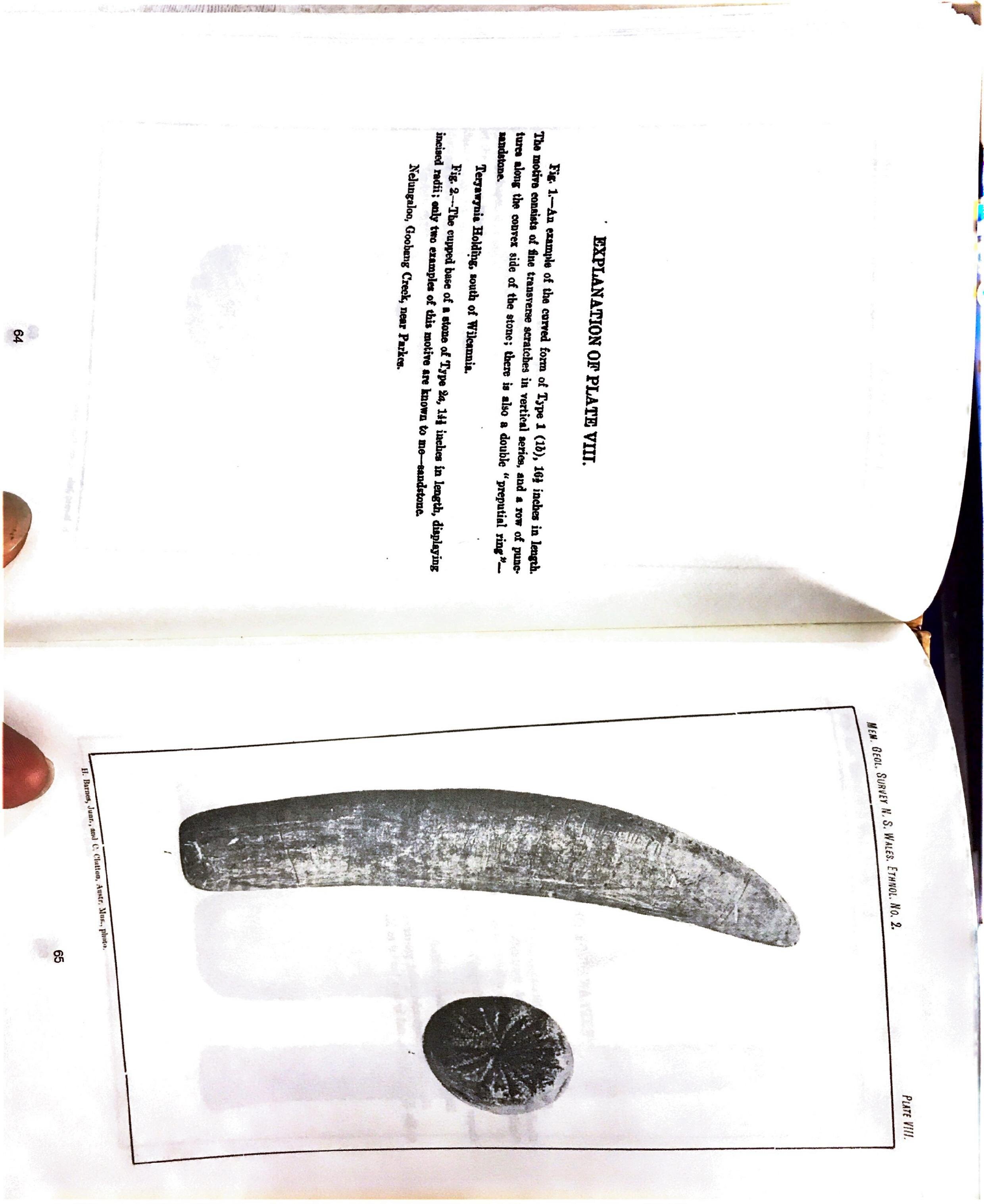Mr Pascoe’s ‘Hoes’, 'Megafauna Butchering Tools' or a Simple Pounding Tool? - It’s your Bogan Pick
To support his ‘Aboriginal Agriculture’ theory, Mr Pascoe needs some ‘farm machinery’, and he has zeroed in on the stone tools known as ‘Bogan picks’, which he tells us are ‘Aboriginal ploughs’.
Maybe they are, or maybe they aren’t, no one really knows. But based on what Mr Pascoe had to say about them, when he presented the 2017 Stephen Murray-Smith Memorial Lecture, at the State Library of Victoria on November 16th 2017, we really think he is stretching his ideas too far based on the evidence that he presents.
We have contrasted the claims in his lecture with the evidence that we have uncovered, and we invite the reader to decide.
In the words of Mr Pascoe during his lecture: “This stone was found by a young Aboriginal man in the Australian Museum. There wasn't just one of them, there were thousands of them. Thousands of those stones. The stone is that big [Holds out his hands about a metre apart, like a proud fisherman]. It's too heavy to use above your waist. It was attached to a right-angled handle.
- 2017 Stephen Murray-Smith Memorial Lecture @ 25:00
How big? Our contact with the Museum leads us to believe that these Bogan picks are only about 20-30cm long (not 1metre!) Indeed, the relative size of the standard, museum identity tag in our photo, left, shows that Mr Pascoe’s Bogan pick, above, is about the same length, that is, about 20cm. Maybe he meant it looked 1 metre long up on the screen?
Mr Pascoe continues, “The leading edge had only ever been used in the soil. Only one of the stones in the museum was labelled. This one is called a Bogan pick. It is a plough. It is a land-turning tool used by Aboriginal people. There are thousands of them that have never been described in any academic text other than what the explorers described.”
When we contacted the National Museum of Australia, they promptly wrote back to say that they had seven (not thousands) of Aboriginal stone implements described as "‘Bogan picks”, the largest being 32cm in length. All were neatly catalogued, as can be seen in the inventory they sent to us.
Mr Pascoe is disparaging of past amateur collectors, scholars and researchers with his comment,
“Here's an opportunity. We can't look at this and be devastated by its absence in our scholarship, because here is the opportunity for young scholars and old to examine these things. To dispel the myth that we've allowed to cloud our eyes. After Jonathan Jones, who found that first stone told me about it – sent me that photograph – that photograph, which should change the mind of Australia about its own history and change our relationship with Aboriginal people, forever. I was in Daylesford…and I happened to be able to get to the museum, and I found a glass cabinet with eight or nine of the stones in it. And they were called 'unusual stone'. Once again, the leading edge has never been used on stone or wood, only ever in soil. [No evidence is offered by Mr Pascoe for this claim and no other researcher or academic appears to ever have made such a sweeping, unsubstaniated claim]. And they truly are unusual stones, because they are Aboriginal earth-turning tools [No evidence is provided by Mr Pascoe that they are]. None of your children, or grandchildren, or yourselves have ever heard of these things.”
- 2017 Stephen Murray-Smith Memorial Lecture from 25:00
A cynic might describe this as, ‘the ignorant lecturing to the ignorant’. Despite what Mr Pascoe says, there have been numerous studies of Australian Aboriginal stone implements, many of which mention ‘Bogan picks’. It is totally disrespectful to our current and past researchers who have devoted a large amount of time to the study of Aboriginal artifacts. We cite a few below :
This study from 1946 was comprehensive in its day. In particular we quote the section on Bogan picks : “The Bogan-pick (Fig. 338) is ellipsoid in shape, tapering to a point or working edge at each end, or at one end. Each half is cone-shaped. The surface is pecked, and the transverse-section is round or oval. Of the three examples known one, from east of Balan, Victoria, figured by Horne (1921, fig. 50), is pointed at one end and rounded on the butt; one from Grong Grong, N. S. Wales (McCarthy, 1944, p. 259, pI. xv, fig. 4) is elliptical but pointed at one end only; one from the Bogan River, New South Wales, has a conical point at each end, one formed by three facets and the other by four facets.They are from 18 to 23 cm. long, and up to 5 lb.[2.5kg] in weight. The name Bogan is derived from the Bogan River, New South Wales, where one of the above specimens was found”.
Hardly a metre long and so heavy you couldn’t use above your waist as Mr Pascoe claims!
Or are they Megafauna Butchering Tools?
One of Mr Pascoe’s favourite sources for Dark Emu is the anthropologist, Norman Tindale, and Mr Pascoe cites him extensively in Dark Emu and in his lectures. Nevertheless, Mr Pascoe completely ignores Tindale’s writings on Bogan picks. Tindale wrote in 1977:
“At that time, the relics which Mr Norman Blunden and I have found in the areas around Wellington and at Noola near Rylstone, consist of the tools similar to those found on Kangaroo Island, the type area of the Kartan Culture, including …..heavy elongate chopping tools suitable for two-handed use with the adzing trims on the end, and as an addition many large grooved, and a few ungrooved so-called bogan picks. Most of these have come from monocultural Kartan sites found within the general triangle area with points at Brewarrina, Coolamon and Quirindi…Indications having been gained that the bogan pick is an accompaniment of the Kartan culture suite, Norman Blunden (pers. comm., 9 March 1974) has suggested that the bogan pick could have been hafted and employed in the killing and perhaps the opening up of bodies of entrapped large Australian mammals such as the Diprotodon and the giant kangaroos. If his conclusion is valid, that the pick was an accompaniment of the early Kartan, it would have become less useful and ultimately forgotten as the need for it declined with the disappearance of these animals. He has noted that these implements have occurred in numbers of cases in situations where, as in constricted depressions, traps may have once been employed”.
N. Tindale ‘Adaptive significance of the Panara or grass seed culture of Australia’, in Wright, R.S.V. ed. Stone tools as cultural markers. Canberra, 1977: p348.
So this theory may suggest why the Bogan picks are quite rare and there is no contemporary Aboriginal or settler knowledge of what they may have been used for.
Nevertheless, our archaeology informants advise us that their use as mega-fauna butchering tools is not generally accepted within academia.
If Mr Pascoe is right that they are ‘ploughs’, then presumably they would have been in widespread use throughout Mr Pascoe’s, ‘Aboriginal Agricultural Society’. The Aboriginal ‘farmers’ ‘would have used them on a daily basis to ‘till’ the soil where they grew their grain and yam crops. The presence of Bogan picks would most certainly have been commented on by the early explorers and settlers, and they would have turned up frequently in the collections of the early collectors and museums, with their timber handles still in place and encrusted with sods of dirt.
In reality, the Aborigines were only ever seen using the wooden digging sticks which every Aboriginal woman possessed. There are no recorded examples of an Aboriginal woman being seen using, or carrying, a Bogan pick.
Just because something looks like a ‘hoe’ or a ‘plough’ doesn’t mean it is one.
Here is an excerpt from an old catalogue describing a stone axe that looks remarkably like a ‘hoe’ too. Apparently this axe-style could get really big - up to 16 lbs (7kg) which also would be hard to lift above the waist continually. But in fact it was used to split logs and its ‘hoe-like’ appearance is merely co-incidental.
Similarly, just because a Bogan pick could be said to look like a hoe, doesn’t mean it was used as one.
Aboriginal stone artefacts in Gulgong Museum (NSW, Australia). It seems that there is no recorded knowledge, or even an Aboriginal oral history, as to what these rare and mysterious Bogan picks were actualy used for. If they were the soil-cultivating ‘hoes’ that Mr Pascoe claims, then there would have recorded explorer observations of Aboriginal women tilling the soil with a hafted (wooden-handled) Bogan pick and many more would have been collected with their handles in place. In addition, the local Aborigines would have told the early explorers and ethnographers about them and their use. In reality, the historical record is silent, leading us to conclude they were not used as Mr Pascoe would have us believe.
There is no record in the early ethnographers collections of any ‘hoe-like’ implement, or any stone Bogan pick-like item, that was recorded as being used as a soil-cultivating hoe, as claimed by Mr Pascoe.
Here are diagrams of the tool kits of the Aborigines from SE Australia and Tasmania - no Bogan pick ‘hoes’ to be seen.
So what were Bogan picks used for?
The current status within academia is that no-one really knows, partly because none have been found ‘in-situ’, so archaeologists haven’t been able to study them in context with other Aboriginal artefacts and camp-site residues. All the examples we have now are single, cleaned items within collections, so much of their contextural knowledge has been lost.
Nevertheless, the favoured theory on what they were used for is as a grain, nut, vegetable or even ochre pounding tool.




